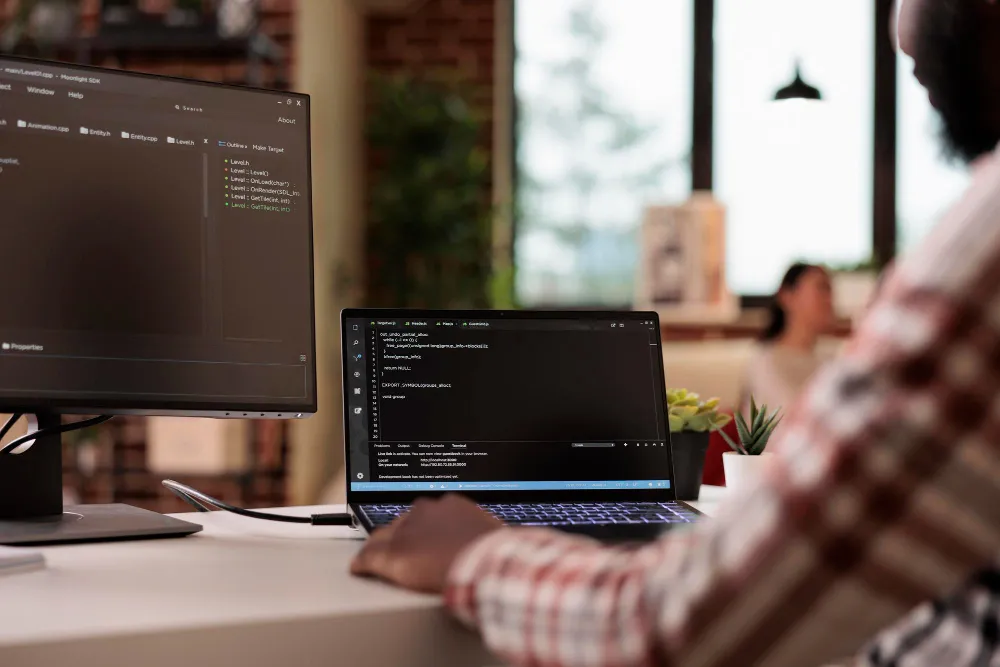Best Practices for Boosting Software Security and Efficiency

Today, rapid development of information technology goes hand in hand with a constant increase in threats and expectations from products. Improving the quality of software products requires not only rapid development, but also attention to security. That is why, in addition to all of the above, it is necessary to have knowledge of best practices for improving software security and development productivity. Let's start with what software security is. Also, what steps will help make software solutions more reliable and effective?
Early Integration of Security into the Development Lifecycle
Start with planning. Security in software development must be integrated. Architectural decisions, technology stack choices, and access policies must take security for software into account. This means:
- Creating requirements for secure software;
- Designing secure APIs;
- Encrypting data;
- Threat modeling.
It is also important to understand what security software means in the context of your specific product:
Is it a set of tools?
Is it built-in security mechanisms at the code level?
Code Review. Code Audit
One of the key practices is regular code review. It helps to identify vulnerabilities, logic defects, and inefficient algorithms. Use both automated tools and manual analysis during the audit.
- Static code analysis will reveal typical errors.
- Manual review will help you spot architectural issues.
Code review also reduces technical debt and improves readability. At the same time, it facilitates scaling.
For an even deeper analysis of code quality and security, you can engage specialists who specialize in auditing software solutions. Anadea's services team conducts a comprehensive code review. It combines automated analysis, manual verification, and performance testing. Specialists evaluate architecture, code quality, and data security. They also check for compliance with modern standards and application stability. This approach helps not only to identify vulnerabilities. It will also help to optimize the performance and structure of the project. For companies seeking to create reliable, scalable, and secure software solutions, this path is effective for long-term product stability.
Practical tips
- Establish clear code quality criteria and checklists for review.
- Implement peer review and pair programming for critical areas.
- Use tools for static code analysis and dependency scanning.
- Keep change logs. Document security decisions.
Access Control. Encryption
The principle of least privilege should be one of the basic rules.
Implement role-based access control. Do not forget about multi-factor authentication. Do not forget about secure data transfer.
Encryption at rest and in transit should be standard. This applies to both internal services and external APIs.
Carefully select algorithms and libraries.
Avoid outdated methods.
Logs. Monitoring. Incident management
Set up centralized logging, monitoring, and alerting. These are another element of software safety. Rapid detection of anomalies and prompt response will reduce the impact of incidents. Also, set up response plans.
Conduct drills to prepare teams.
Test Automation. CI/CD
Automated tests and security checks into CI/CD significantly increase efficiency. The pipeline should include:
- Unit tests;
- Integration tests;
- Security tests, in particular:
- SAST (static application security testing),
- DAST (dynamic application security testing),
- SCA (software composition analysis).
This way, you can identify problems at the commit stage. As a result, you reduce the cost of fixes and improve software development security.
Dependency verification. Package management
Modern projects often depend on open-source libraries. Therefore,
- Regularly check types of security software and their vulnerabilities;
- Apply updates and fixes;
- Use tools to monitor CVE and automatically update secure versions.
Architectural Approaches for Performance and Security
Architecture affects how easy it is to maintain secure software. The following help limit the scale of incidents:
- Microservices;
- Properly configured network policies;
- Containerization;
- Environment isolation.
However, the importance of configuration management and secrets management is growing.
Code optimization and resource-intensive operations
Improve performance:
- Algorithm optimization;
- Caching;
- Asynchronous request processing;
- Proper connection pool management.
At the same time, profiling and load testing allow you to identify bottlenecks before they affect users.
SMS, Voice & Fax Automation. Their Impact
For services that work with messages and calls, it is important to consider security specifics. These include:
- Protection of subscriber data;
- Channel encryption;
- Delivery control.
SMS, Voice & Fax Automation can optimize business processes. At the same time, they require additional checks for vulnerabilities in integration with external providers.
Examples and Categories of Security Measures
To better understand the terms, let's look at software security examples and categories. In particular, types of security software include:
- Antivirus solutions;
- Intrusion detection systems;
- Web application firewalls (WAF);
- Vulnerability management tools.
Computer software security covers both tools and practices. That is, from encryption to access policies.
In the context of risk assessment, types of software security include different approaches. So, it's important to have a clear security software definition and understand the contribution of software development and security to the process.
Typical examples. Scenarios
Protection against malware and ransomware — antivirus products and EDR systems.
Monitoring and response — SIEM and SOAR platforms for event correlation.
Web application protection — WAF and regular security scans.
Dependency management — SCA and tools for detecting vulnerabilities in packages.
Quality Control. Tools

Implementing software security best practices involves not only policies, but also specific tools:
- Linters;
- Test frameworks;
- Systems for deploying updates and monitoring.
Software engineering security requires shared responsibility among the team. That is, developers, DevOps, and security engineers must work as one team.
Quality control checklist
- Include security checks in CI/CD.
- Conduct penetration testing regularly.
- Have an incident response plan.
- Check dependencies for vulnerabilities.
- Conduct code reviews with an emphasis on secure coding.
Balance
To ensure security in software development, find a balance. The one between strict policies and user-friendliness. Excessive restrictions usually slow down product development. On the other hand, overly loose rules create risks.
That is why iteration is important:
- Implement changes gradually;
- Measure the impact;
- Adjust policies.
Investing in Long-Term Sustainability
Short-term security costs are often perceived as unnecessary. However, they reduce future risks. They also reduce the cost of fixing mistakes.
Software development and security is an investment in the company's reputation, user trust, and financial stability.
By focusing on software engineering security, you not only prevent attacks, but also make your product more competitive.
Final checklist of fundamental steps
- Define security requirements for software.
- Integrate secure software practices into the development lifecycle.
- Use external audits and code reviews for an outside perspective.
- Train your team. Make security part of your culture.
- Test regularly and keep your systems up to date.
Conclusion
By applying the suggested practices, you can achieve not only increased security but also better development productivity. The answers to the question “what is software security” lie in a systematic approach. This includes technical measures, processes, and people working together. Secure software is not the ultimate goal. Continue to implement code reviews, automated checks, and access control. Train your team. With this comprehensive approach, you will get a more reliable and resilient system.
